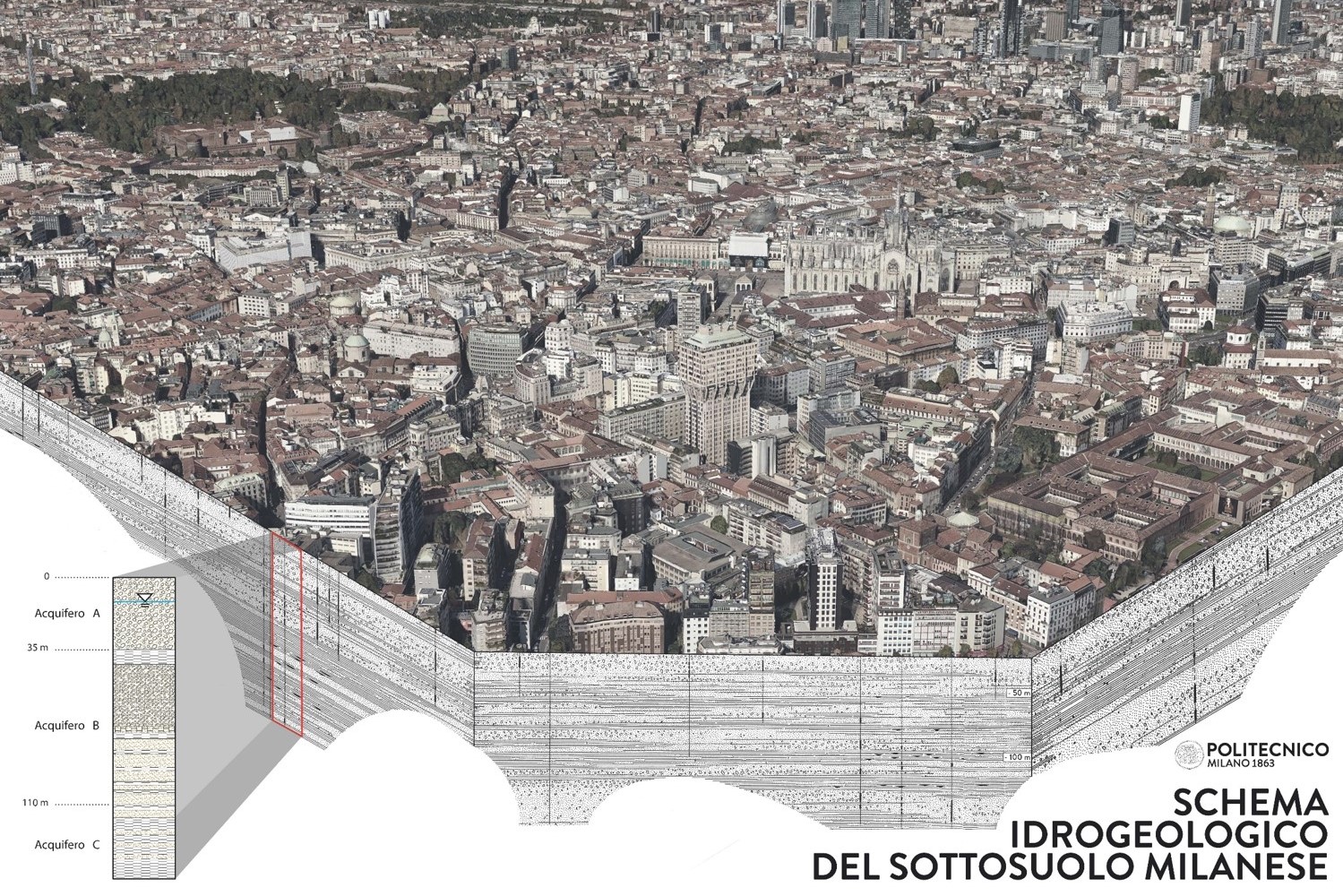The research line is part of the departmental macro-thematic concerning “Natural, environmental and land systems ”, i.e. “Management of natural resources”. The research starts from the conceptual and numerical modeling of the underground water circulation, in both continuous (alluvial), cracked and double porous (fractured and karstic) media. The modelling of groundwater flow is aimed at solving application problems, such as evaluating the interactions between surface and deep water circulation, with particular reference to the definition of exchanges between water courses and aquifers, as well as the prevention of depletion as quantitative. The numerical modelling of the flow is also aimed at the assessment of the environmental impact, hydrogeological specfically, in the use of low-enthalpy geothermal systems, as well as the excavation of aggregates under the water table and the consequent requalification of quarry areas. For this purpose, flow modeling is often associated with transport modeling. In this context, particular attention is paid to the numerical transport modeling of LNAPL and DNAPL with a dual objective:
(1) identify the hydrogeological parameters and the chemical-physical characteristics of the target contaminants to be used in the modeling of NAPL, in order to quantify the critical response time in case of leakage and to predict the evolution of the plume also as a function of the amount of spilled contaminant;
(2) select the technologies (including geophysical technologies) to monitor (continuously and not) the presence of hydrocarbons in the soil system, in order to design Early Warning systems near the hazard center. In addition, compositional and isotopic fingerprinting techniques are applied and developed for the study and characterization of groundwater contamination phenomena. Finally, density dependent modeling is conducted to study saline intrusion phenomena in coastal aquifers, also showing the influence that fluids at different densities (salt water) can have in the transport of contaminants. For this purpose, both finite element (Feflow) and finite difference (ModflowSeawat) calculation codes are used, which are able to simulate density dependent flows and transport, in saturated and unsaturated means. Part of the research is dedicated to the analysis of the tidal influence of density dependent modeling on pipeline development to study safine intrusion phenomena in coastal aquifers, also showing the influence that the fluid at different densities (salt water) can have in the transport of contaminants. Another part of the research is dedicated to the analysis of the tidal influence on the development of the salt intrusion cone and of the freshwater-salt water interface and to how the variation of the piezometric sea level affects the distribution of the contamination moving towards it. In particular, the concept of apparent dispersivity, linked to the variation in modulus and direction of the flow velocity of the water table near the coast due to tidal phenomena, has been studied in depth. At present, research is focused on the quantitative management of coastal groundwater resources and the identification of technologies that allow to minimize the phenomenon of intrusion and maximize the amount of water extracted.

